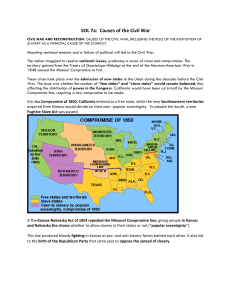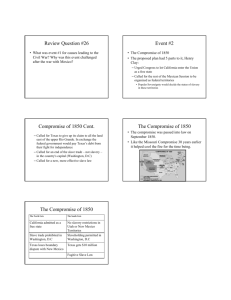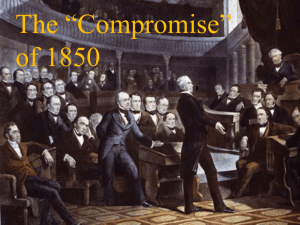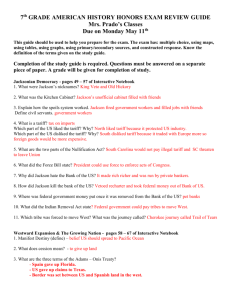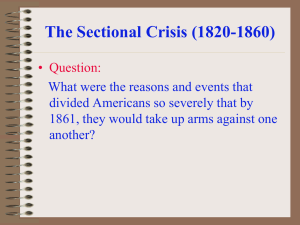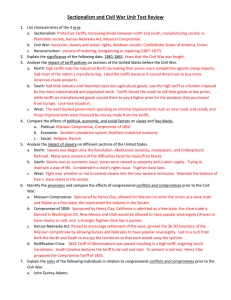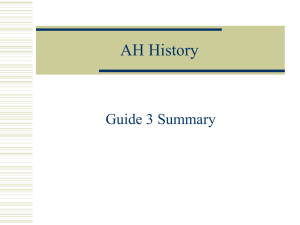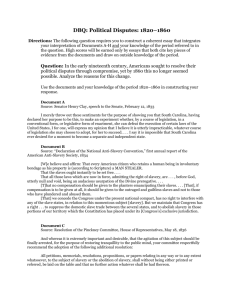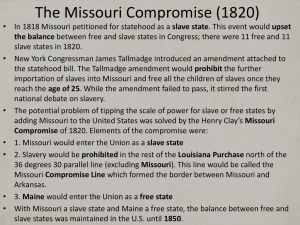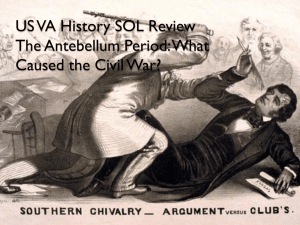Timeline of Sectionalism
advertisement
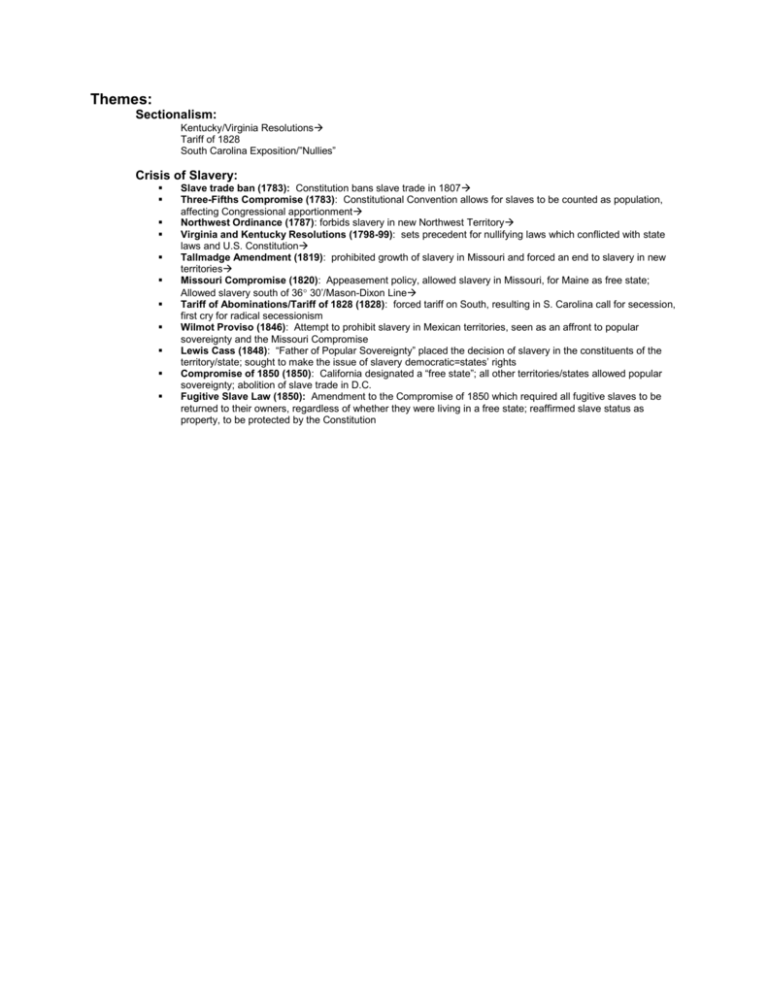
Themes: Sectionalism: Kentucky/Virginia Resolutions Tariff of 1828 South Carolina Exposition/”Nullies” Crisis of Slavery: Slave trade ban (1783): Constitution bans slave trade in 1807 Three-Fifths Compromise (1783): Constitutional Convention allows for slaves to be counted as population, affecting Congressional apportionment Northwest Ordinance (1787): forbids slavery in new Northwest Territory Virginia and Kentucky Resolutions (1798-99): sets precedent for nullifying laws which conflicted with state laws and U.S. Constitution Tallmadge Amendment (1819): prohibited growth of slavery in Missouri and forced an end to slavery in new territories Missouri Compromise (1820): Appeasement policy, allowed slavery in Missouri, for Maine as free state; Allowed slavery south of 36 30’/Mason-Dixon Line Tariff of Abominations/Tariff of 1828 (1828): forced tariff on South, resulting in S. Carolina call for secession, first cry for radical secessionism Wilmot Proviso (1846): Attempt to prohibit slavery in Mexican territories, seen as an affront to popular sovereignty and the Missouri Compromise Lewis Cass (1848): “Father of Popular Sovereignty” placed the decision of slavery in the constituents of the territory/state; sought to make the issue of slavery democratic=states’ rights Compromise of 1850 (1850): California designated a “free state”; all other territories/states allowed popular sovereignty; abolition of slave trade in D.C. Fugitive Slave Law (1850): Amendment to the Compromise of 1850 which required all fugitive slaves to be returned to their owners, regardless of whether they were living in a free state; reaffirmed slave status as property, to be protected by the Constitution





